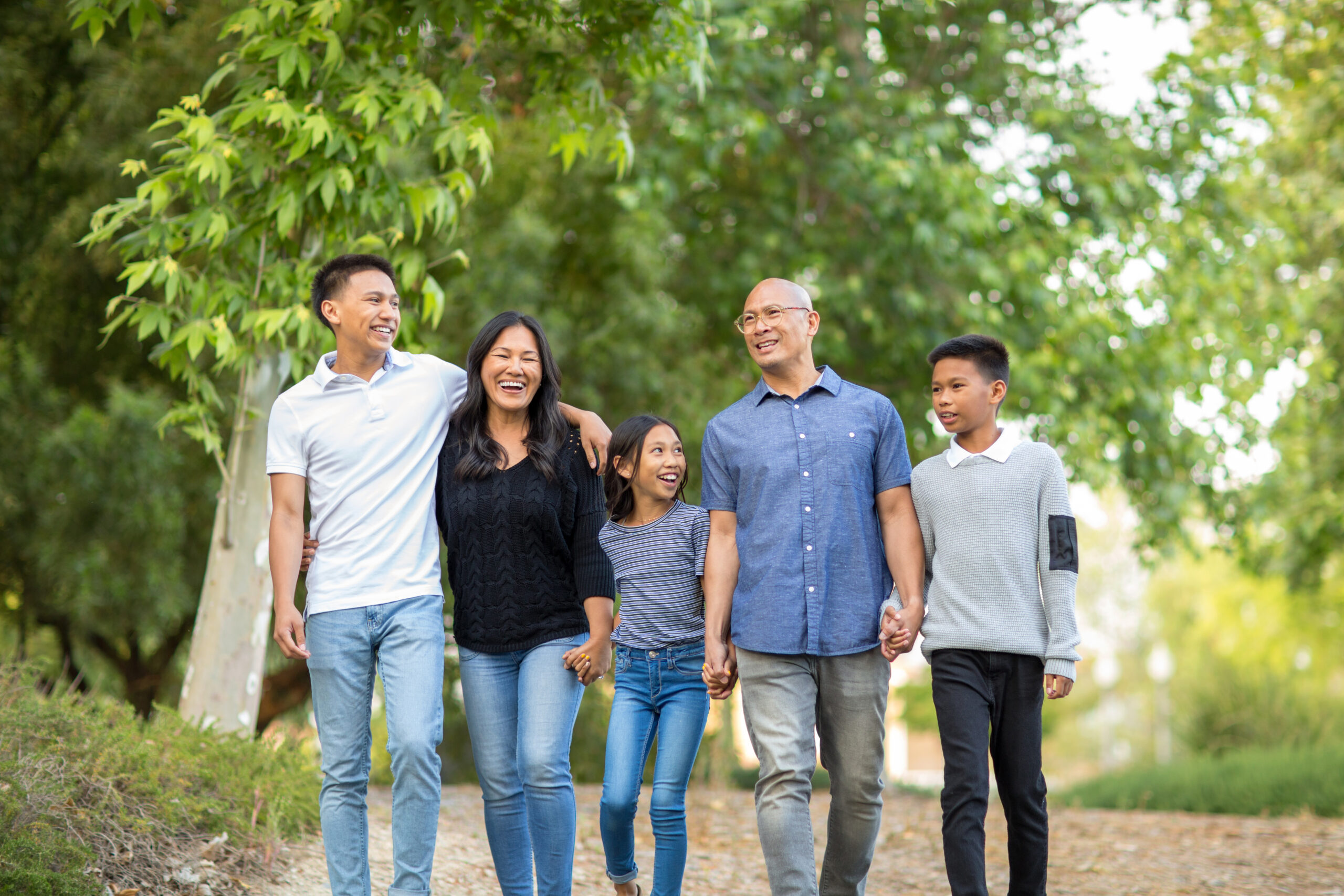

Recognizing Health Disparities Among Asian American, Native Hawaiians, and Other Pacific Islander Populations
By: Lillian Witting, MPH, Coordinator, Research, Education and Programs
Although the historical wins at the 2023 Emmys for a fun and reality-bending movie furthered the representation of East Asians in American media, there is also a need to recognize the history and very real health disparities of Asian Americans, Native Hawaiians, and other Pacific Islanders (AA & NHOPI). May was chosen as Asian American and Pacific Islander (AAPI) Heritage Month to commemorate the immigration of the first Japanese to the U.S. in May of 1843 and the completion of the transcontinental railroad in May 1859 with the labor of Chinese immigrants.
Yet despite the labor that many Asian immigrants provided, strict immigration policy barred citizenship up until the 1960s. Due to geographical proximity, Native Hawaiians and other Pacific Islanders have been conflated with Asian Americans despite the different historical narratives. Native Hawaiians suffered from settler colonialism and annexation by the U.S. in the late 1800s, leading to sharp population decline and disproportionate land ownership policies while many other Pacific Islanders dealt with U.S. militarism.
The term “AAPI” has sparked intense debate over the separation of NHOPI from the larger AA community. However, the legacies of these policies and colonization have impacted both to the present day, influencing drivers of health and overlooking the rich diversity of the subgroups. Nowadays AA & NHOPI comprise 6.4% of the U.S. population as of 2022, making them the third largest historically underrepresented racial/ethnic (HURE) group.1 As the fastest-growing group in the U.S., AA & NHOPI populations must continue to elevate their issues and voices to recognize and address the health disparities.
Data aggregation by health agencies is a major concern that obscures health challenges of AA & NHOPI subgroups. The community is hardly a monolith, with roots to over 26 countries in East and Southeast Asia, the Indian subcontinent, and island regions of Oceania that include Melanesia, Micronesia, and Polynesia.
This diversity underscores the importance of including all racial and ethnic populations in providing equitable health care. NHOPI have a higher prevalence of obesity and cardiometabolic disease and are 2.5 times more likely to die from diabetes compared to non-Hispanic White populations. Compared to U.S. Asians, NHOPI also have higher prevalence of kidney disease, heart attacks, and stroke.2 Among AA subgroups, Asian Indians and Filipinos had higher rates of diabetes mellitus compared to non-Hispanic Whites and non-Hispanic Black populations.3
During public health emergencies, disaggregation is needed to recognize the effects on certain communities. COVID-19 deeply affected NHOPI populations as they had some of the highest case and mortality rates out of all racial and ethnic groups.4 AA were reported to have the lowest hospitalization and mortality from COVID-19, but this overshadowed devastating statistics such as the disproportionate mortality rate of Filipino American nurses, who only make up around 4% of the nursing population but make up almost a third (31.5%) of registered nurses who have died of COVID-19.
Other socioeconomic issues such as income, language, and culture factor into how the AA & NHOPI populations interact with the health care ecosystem. AA groups have the largest wealth gaps of any HURE population, impacting health outcomes. For example, Burmese Americans compared to the overall AA population make almost 50% less than the average AA household income ($44,000 vs. $85,000) and have lower English proficiency which result in low rates of satisfaction of care or clinical experience.5,6
Among Asian Americans, roughly 14 million foreign-born people in the U.S. were born in Asia which has led to limited English proficiency and unfamiliarity with the Western health system. This highlights the need for culturally appropriate services as AA populations are the least likely racial group to visit a primary care physician.7 Within NHOPI communities, there have been movements to increase the number of NHOPI physicians in medically underserved areas to build patient-provider trust and address language barriers.2
As an immigrant and Asian transracial adoptee, I have a strong drive to voice issues impacting underserved and overlooked identities. Despite the blank spot in my biological family history, the loss has increased the pride I take in my heritage and what it means to be an Asian American.
This May is a time to celebrate the Asian, Asian Americans, Native Hawaiians, and Pacific Islanders that came before us, but also recognize the work that needs to be done to improve the health system for ourselves and those who will come after.
References:
- U.S. Census Bureau QuickFacts: United States. Accessed May 18, 2023. https://www.census.gov/quickfacts/fact/table/US/IPE120221
- Morisako AK, Tauali‘i M, Ambrose AJH, Withy K. Beyond the Ability to Pay: The Health Status of Native Hawaiians and Other Pacific Islanders in Relationship to Health Insurance. Hawaii J Med Public Health. 2017;76(3 Suppl 1):36-41.
- Shah NS, Luncheon C, Kandula NR, Cho P, Loustalot F, Fang J. Self-Reported Diabetes Prevalence in Asian American Subgroups: Behavioral Risk Factor Surveillance System, 2013–2019. J Gen Intern Med. 2022;37(8):1902-1909. doi:10.1007/s11606-021-06909-z
- 2022. COVID-19 Cases and Deaths, Vaccinations, and Treatments by Race/Ethnicity as of Fall 2022. KFF. Published November 17, 2022. Accessed May 18, 2023. https://www.kff.org/racial-equity-and-health-policy/issue-brief/covid-19-cases-and-deaths-vaccinations-and-treatments-by-race-ethnicity-as-of-fall-2022/
- Yom S, Lor M. Advancing Health Disparities Research: The Need to Include Asian American Subgroup Populations. J Racial Ethn Health Disparities. 2022;9(6):2248-2282. doi:10.1007/s40615-021-01164-8
- Wang T, Stella A, Jawiche J, et al. Working With Burmese Patients: Understanding Historical and Cultural Contexts to Improve Health Care Access and Health Status. MedEdPORTAL J Teach Learn Resour. 18:11260. doi:10.15766/mep_2374-8265.11260
- Wu G, Augustine N, Kwon SS. Preventive Cancer Screening in Asian Americans: Need for Community Outreach Programs. Asian Pac J Cancer Prev. 2022;23(2):393-397. doi:10.31557/APJCP.2022.23.2.393


